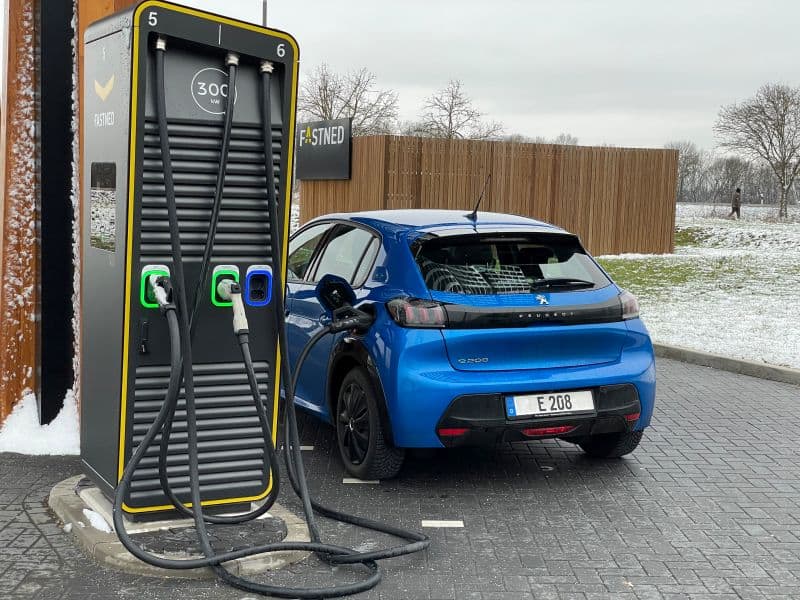The Combined Charging System Is a Standard for Electric Vehicles. Here’s What You Should Know
Since EV technology is relatively new, understanding different charging systems can be the most confusing aspects of owning an electric vehicle. As the primary company to achieve widespread EV sales in North America, Tesla created their own charging system that has been, for the most part, proprietary. As other car companies developed their own EVs, however, other standardized charging systems emerged, including the Combined Charging System.
At TCA Electric, we’ve been at the forefront of EV charging installation here in Vancouver, and we understand that learning the nuances of EV charging can be a challenge. The Combined Charging System (CCS) aims to streamline the charging process, and today we’re sharing more information to help EV drivers understand their options.
What Is the Combined Charging System?
The Combined Charging System, also known as a combined charging unit or CCS for short, is a charging port that aims to be the standard for electric vehicles. The port features two main sections at the top and bottom; the top half can accept a Level 2 plug, while the full port is used for Level 3 charging—hence, the “combined” name.
The Combined Charging System was invented in Europe and has been widely used there. It is also common in North America, and CCS chargers have been installed here in Canada, primarily in public spaces. CCS and other Level 3 capable chargers are generally considered impractical for home use, and are more commonly used to charge the fleets of large companies such as Amazon and Google.

What Car Brands Use CCS?
The Combined Charging System originated in Europe, but the adoption of CCS ports extends beyond European car manufacturers. Aside from Tesla, many notable North American car companies adopted the CCS standard, including Ford; throughout the world, popular car companies like Honda, Hyundai, BMW, Kia, and many others did the same. EV company Rivian also uses the Combined Charging System.
Tesla is the most notable exception, as they use a proprietary charging port now called the North American Charging Standard (NACS). This port is the only one natively used by Tesla. While previously the charging technology was entirely proprietary, Tesla did ultimately share the system and begin selling adapters so that other car brands could charge on the Tesla Supercharger network using CCS.
Will All Cars Use the Combined Charging System?
The Combined Charging System was developed for use as a standard used across nearly all electric vehicles. This would make charging easier for drivers in general, as they would no longer need to determine what type of charger they were about to use or utilize adapters to connect at different stations.
However, adoption of CCS as a standard has not gone smoothly. While major manufacturers like Ford, GM, Honda, and Kia have been using CCS ports, this may be changing soon. Tesla made the design for their charging port available to other companies in November 2022, and in 2023 many companies began jumping on board.
Since Ford announced themselves as the first manufacturer to adopt the NACS plug, many others have chosen to follow suit. A long list of manufacturers will be switching from the Combined Charging System to the NACS as a standard on their vehicles in 2025 and providing adapters to EV drivers with earlier models of electric vehicles.
Adapters May Be Needed for a Little Longer
Even with this change, CCS is not going away, and has pushed back against adoption of NACS as the standard. In addition, many charging stations already use CCS for Level 3 charging, including many non-Tesla public stations here in Canada.
However, there is good news for electric vehicle drivers amid this competition: whereas previously Tesla made their chargers entirely incompatible with other companies, and Combined Charging System stations were similarly incompatible with Tesla cars, adapters are now readily available that enable EV drivers to charge their vehicles anywhere they need.
While this is somewhat cumbersome, it does enable Tesla and non-Tesla owners to access a much wider range of charging options that were not previously available. And when a standard is settled on, EV drivers with a different dock shouldn’t have too much to worry about.
Make Charging Simple with a Home EV Charging Station
While public charging stations have become much more commonplace, there is still a bit more work to be done to make EV charging as accessible and simple as possible. Luckily, at TCA Electric, we can help! Our team has installed countless home EV chargers for residents throughout Vancouver, enabling drivers to break free from their dependence on third-party charging stations.
Home EV chargers make EV ownership the best it can be. Reach out to our team today to start planning your installation!



